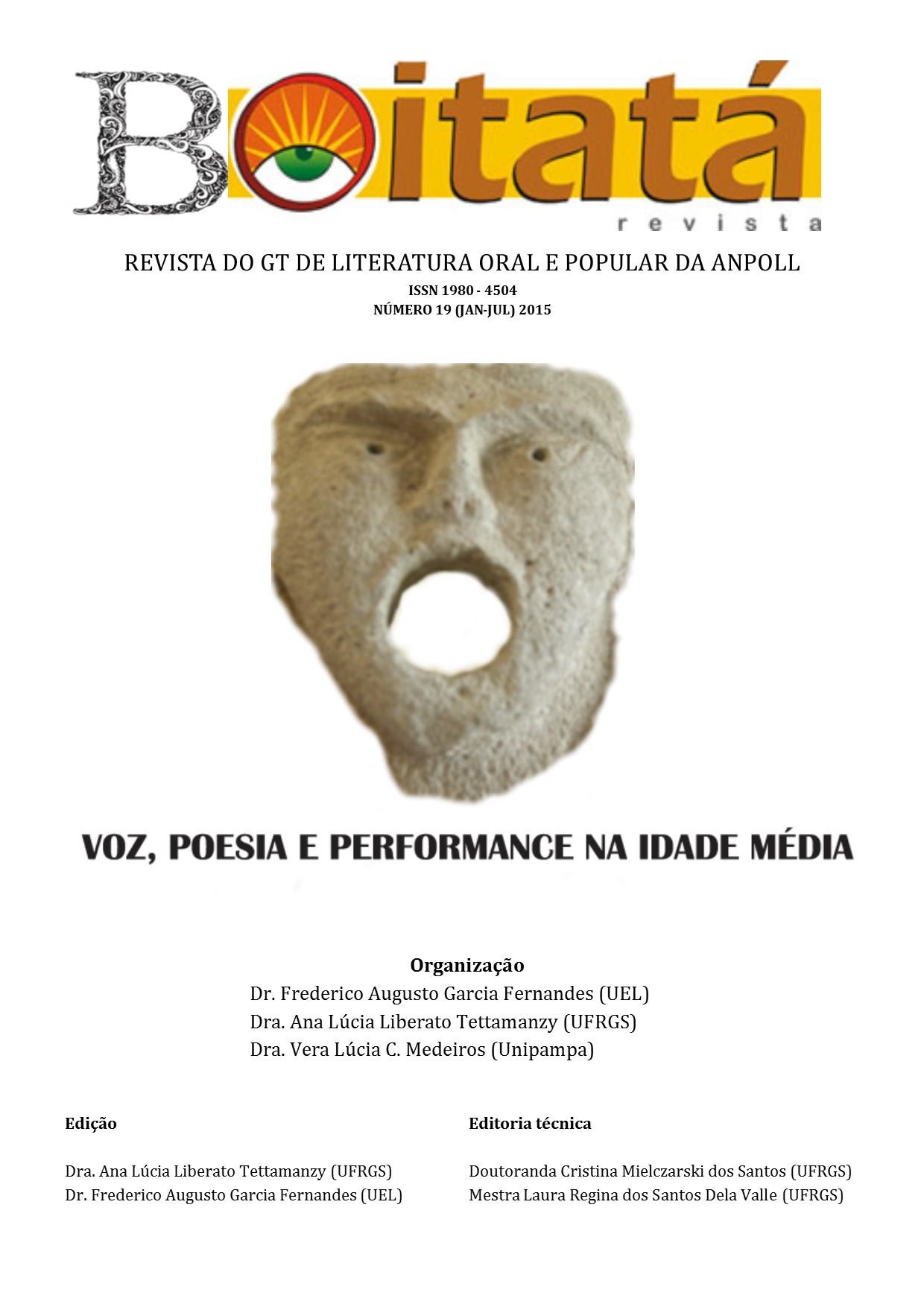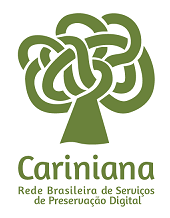From deadly vox to living vox: composition systems and orality in the Cantigas of Santa Maria
DOI:
https://doi.org/10.5433/boitata.2015v10.e31505Keywords:
Santa Maria songs, Medieval Lyrics, Orality, Musical poetic composition system, voice,Abstract
The analysis of the composition systems in the Marian Cantigas, attributed to King Alfonso X the Wise, reveals the presence of composition mechanisms acting as mnemonic criteria. The evaluation of the relationship between writing and orality of Alfonsian work opens interesting perspectives in the field composition, as well as the transmission of repertoire. Intertextual and intermelody correspondences among Cantigas and other medieval repertoires show an extensive network of contacts and influence, and are determining factors for understanding meanings behind the texts of Alfonsian poems. The melodic structure, that germinates the process of lyrical composition, is the vehicle for transmitting the religious, ethical and traditional values that are the pillars of the cultural universe of Christian Europe of the Middle Ages.References
CARPITELLA, D. I codici incrociati, Il verso cantato. PESCATORI, A.; BRAVI, P.; F. GIANNATTASIO, F. (Ed.). Atti del Seminario di Studi (abril-junio 1988). Roma: Università degli Studi di Roma , 1994. La Sapienza, 9.
CAVALLO, G.; LEONARDI, C. MENESTÒ, E. Lo spazio letterario del Medioevo. Il Medioevo latino. Roma: Salerno, 1992
DERRIDA, J. De la grammatologie, Paris: Milano: Jaca Book, 1967.
DUGGAN, J. J. Modalità della cultura orale: Lo spazio letterario del Medioevo. Medioevo Volgare, Roma: Salerno, 1999.
FROMM, E. Essere o avere? Milano: Mondadori, 1977.
HUSEBY, GThe Cantigas de Santa Maria and the Medieval Theory of Mode. 1983. Tesis (Doctorado en Musicología) - Stanford University, 1983.
LOCANTO, M. Oralità, memoria e scrittura nella prima tradizione del canto gregoriano, La scrittura come rappresentazione del pensiero musicale Borio. Lucca: ETS, 2004.
MALIZIA, U. A cerca del léxico lírico-musical de las Cantigas de Santa Maria de Alfonso X el Sabio. Quaderni di filología e lingue romanze, V. 7, p. 165-176, 1992.
MENEGHETTI, M. L. Il pubblico dei trovatori. La ricezione della poesia cortese fino al XIV secolo. Torino: Einaudi, 1992.
NICHOLS, S. Medievalism and the Modernist Temper. 31. ed. R. H. London: The Johns Hopkins University Press, 1996.
OLDONI, M. I luoghi della cultura orale, Centri di produzione della cultura nel Mezzogiorno normannosvevo. Musca, Bari: Edizioni Dedalo, 1997. p. 373-388
ONG, W. J. Orality and Literacy. The Technologizing of the Word. London;New York: Methuen, 1982.
ROSSELL, A. Una nuova interpretazione intermelodica e intertestuale della lirica galego-portoghese, La lirica galego-portogheseRoma: Carocci, 2003.
ROSSELL, A. La métrica gallego-portuguesa medieval desde la música medieval: una perspectiva intersistémica para la comprensión de la construcción métrica y para la contrafacción. Ars métrica, v. 1. 15 , 2011.
SCHMITT, C. La Raison des gestes dans l’Occident médiéval. París: Gallimard, 1990.
ZUMTHOR, P. Introducción a la poesía oral. Madrid: Taurus Humanidades, 1991.
ZUMTHOR, P. La lettera e la voce. Sulla «Letteratura» medievale. Bologna: Il Mulino, 1990.
ZUMTHOR, P. La lettre et la voix. De la “littérature” médiévale. Paris: Editions du Seuil, 1987.
Downloads
Published
How to Cite
Issue
Section
License
Copyright (c) 2015 Boitatá

This work is licensed under a Creative Commons Attribution 4.0 International License.
Boitatá esta licenciada com CC BY sob essa licença é possível: Compartilhar - copiar e redistribuir o material em qualquer suporte ou formato. Adaptar - remixar, transformar, e criar a partir do material, atribuindo o devido crédito e prover um link para a licença e indicar se mudanças foram feitas.




















